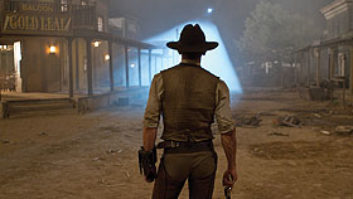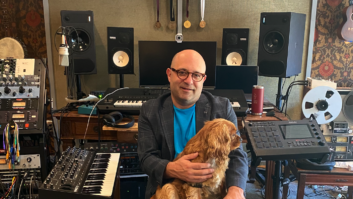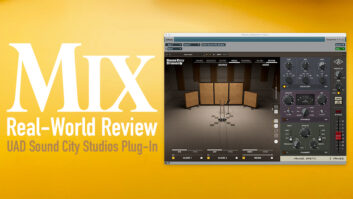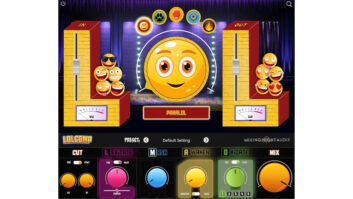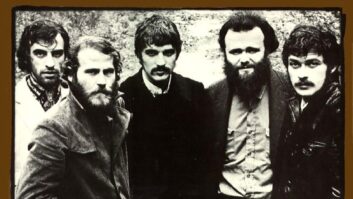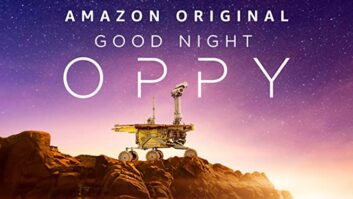Out in support of their latest album, A Hundred Days Off, UK dance act Underworld has embarked on a short fall 2002 North American tour. Following a successful run of European festival dates, the band and crew stripped their road show back to its most essential elements and, for logistical and cost reasons, opted to rent a full P.A. rig in each region. Mix caught one the few West Coast performances, at the Warfield Theater in San Francisco, where the band performed in October to a sell-out audience.
Underworld’s approach to live dance music dictates a very different approach to sound reinforcement. Onstage, the band — now consisting of Rick Smith and Karl Hyde — make use of more than 50 tracks of playback material, live guitar, samplers, keyboards and live vocals, all mixed on-the-fly. Smith utilizes two Macintosh-based Logic Audio/Pro Tools rigs (a main and a spare), which contain all of the backing elements for each song. All of the tempo-synched tracks are arranged vertically in the session so that fresh arrangements and remixes can be achieved by muting and unmuting corresponding channels on the band’s Midas Heritage 1000 console. Hyde is responsible for his own guitar, an Akai MPC 2000, Pioneer CDJ-1000 and vocals. The main vocal mic is a wireless Shure SM58A.
The onstage mix is then bused down to separate group tracks (bass, lead synths, sound effects, etc.) and corresponding channels for kick drum, guitar and vocals. The only stage monitors are two Funktion-One Resolution 2 full-range enclosures and two F-218 bass cabinets. Hyde, however, uses a set of wireless headphones.
“Each song has differently numbered tracks and parts,” FOH engineer John Newsham explained. “When they recall a song, Rick has a [tape] strip that matches the song with all of the parts. The automation on the Heritage helped a lot with muting and levels. He kind of does a live remix of the tune. We’ve been ’round with it so many times: ‘How do you do this stuff live?’ For a long time, the only way we could do it, technically, was for him to send me a complete mix of what he was doing and then some splits. This time, with the Heritage, Rick can use his VCAs as his groups, and he sends me basically four stereo groups. I have much more room to adjust than I’ve ever had before.”
Newsham, who with partner Tony Andrews owns the loudspeaker manufacturer company Funktion-One, has known Underworld personally for nearly 20 years and has mixed FOH for them on numerous tours. For the San Francisco gig, Newsham utilized a Wavefront line array from Delicate Productions. The console for this particular date was a Midas XL3, and the outboard processors included Yamaha SPX-900s, a Lexicon 224, dbx 160s and BSS EQs.
“I usually use a compressor on the vocal and an XTA SIDD,” Newsham continues, “but it’s different every night depending on the system. On [Karl’s] vocal, I also use a left-right Harmonizer, just to take it out of the center of the mix and make it a bit bigger. I also do the delay on the vocal. I doubt if I’ll use any reverb in this room. I very rarely use reverb, unless it’s for rooms that are very dark and I’ll brighten it out a bit. I usually let the room provide the reverb.
“Since the beginning of the summer, we’ve done loads of festival gigs with loads of different P.A.s,” Newsham concludes, “and I just turn up and use what’s there. I really like working like that. You get to use all kinds of people’s effects units; very often, you’ll have a tech on a festival who has got stuff that you’ve never seen before that you can try.”
Robert Hanson is Mix’s assistant editor.
